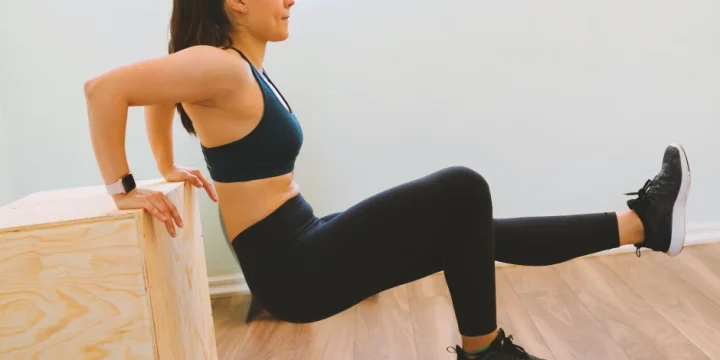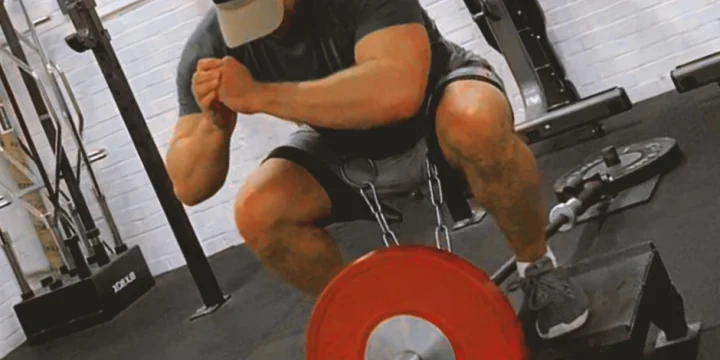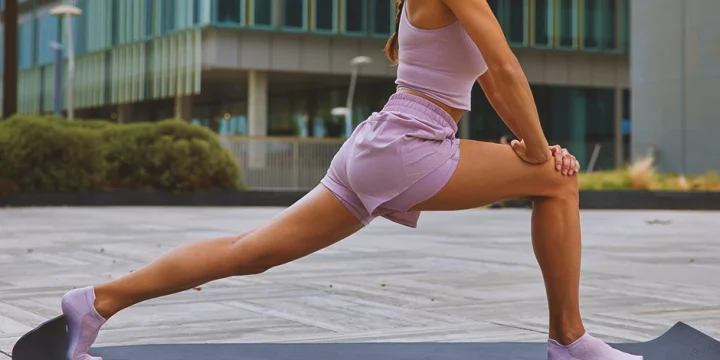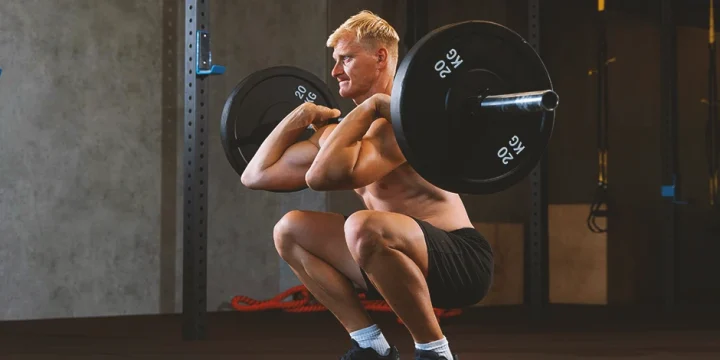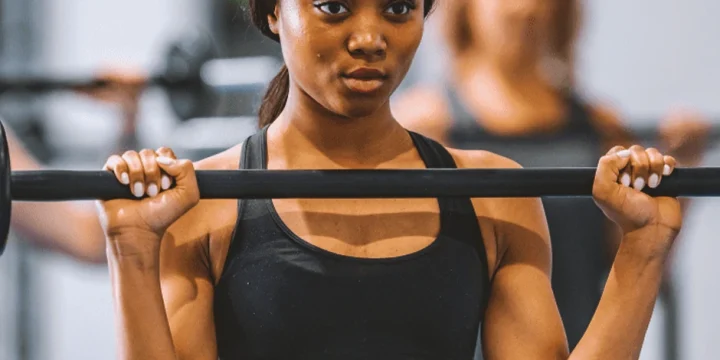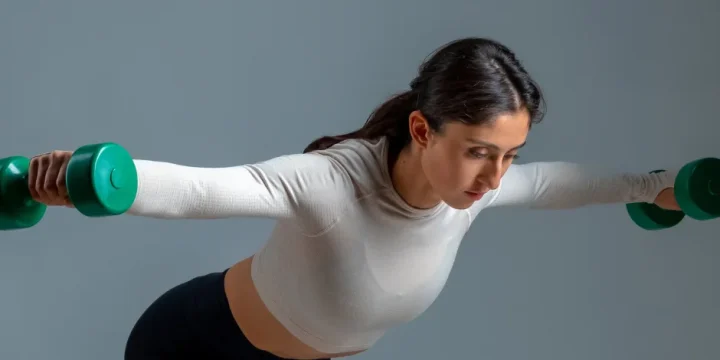I consistently advise clients that the reverse hack squat can effectively target lower body strength, but improper form can result in injuries and suboptimal performance outcomes.
Drawing on my experience as a certified personal trainer and 37 hours of research, I have compiled comprehensive information to guide you in safely performing reverse hack squats and enhancing your athletic performance.
Upon reading the article, you will also gain insights into the benefits of the reverse hack squat and its most valuable variations.
Quick Summary
- To properly perform reverse hack squats, stand with your feet shoulder-width apart and maintain a straight spine throughout the entire exercise.
- The reverse hack squat is an athletic exercise executed on the hack squat machine to develop strong muscles in the lower body.
- The reverse hack squat targets muscles in the lower extremities, including the hamstrings, glutes, adductors, quadriceps, and posterior chain, as identified by the National Institute of Health.
- In my training experience, I've found that the barbell hack squat is an effective variation of the reverse hack squat, suggesting that they include this workout on good mornings to strengthen the anterior and posterior chain muscles.
How To Do the Reverse Hack Squat

Here's how I guide clients on properly performing the reverse hack squat:
- Load the hack squat machine with a suitable weight for at least 8 consecutive reps without pausing.
- Get into the reverse hack squat position, maintaining a shoulder-width stance.
- Ensure a flat back throughout the movement and engage core muscles for improved balance and stability.
- Initiate the exercise by lowering your body toward the floor, bending your hips, knees, and ankles.
- Hold the position for one second when your thighs are parallel to the floor.
- Reverse the motion to return to the starting position.
- Repeat for 8 reps, aim for 4 sets, and rest between 2 and 5 minutes between each set.
Also Read: Best Hack Squat Alternatives
Tips on How To Maximize This Workout
To develop strong lower body muscles, it is advised to integrate the principle of progressive overload, as recommended by the National Institute of Health [1].
Progressive overload entails consistently increasing the weight lifted, sets, reps, and overall training volume in each subsequent workout.
Research from the same institution indicates that this approach is proven to be most effective for achieving superior hypertrophy gains over time [2].
In my experience working with clients, I've found that incorporating adequate rest intervals, periods, and ample recovery time between each workout is crucial to prevent entering the overtraining stage, as supported by PubMed research [3].
Reverse Hack Squat Benefits

Reverse hack squats offer significant benefits, Including:
Less Stress on Your Back
Reverse hack squats can help in reducing stress on the lumbar spine. This exercise shifts the stress away from the entire back, a departure from traditional barbell back squats. By primarily engaging the glutes, hamstrings, and quadriceps, the activity of the erector spinae, the long muscle along the spine, is minimized.
Allows More Volume
The reverse hack squat workout allows for increased volume as it places less stress on the back, providing stability for other stabilizer muscles. Performing over 4 sets is easily manageable without risking side effects or potential injuries.
As a fitness trainer, the optimal number of reps in a set depends on your specific goal. Aim for up to 5 reps if you're focusing on building strength, keep it below 3 for power development, and target the range of 6 to 12 reps for hypertrophy.
Can Be Used for Both Strength and Hypertrophy
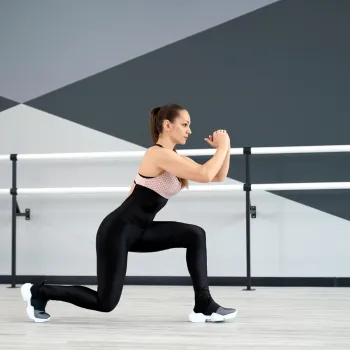
The versatility of reverse hack squats extends to both strength and hypertrophy training. Tailoring your approach, whether focusing on strength (with a rep range of 1-5, 4-10 sets, and 2-5 minutes rest) or hypertrophy (6-12 reps, 4 sets, and rest below 90 seconds), this exercise contributes to well-rounded lower body development while enhancing core stability during squatting movements, as per PubMed [4].
"The back squat, often performed on a machine, is another leg pressing movement to add hypertrophy to the quadriceps and even glutes. This can be beneficial to lifters who may lack size and/or muscle mass necessary for long-term strength development (via front and back squat)."
- Mike Dewar, Certified Personal Trainer
Great for Training With Injuries
Reverse hack squats serve as a viable alternative for individuals managing lower back, knee, or hip injuries. While incorporating this exercise during recovery, seeking guidance from a certified personal trainer is strongly recommended to ensure proper form and programming aligned with the recovery process.
Perfect for Those With Shoulder Mobility Problems

Individuals experiencing external shoulder rotation issues can still benefit from reverse hack squats. Notably, this exercise poses minimal demands on shoulder rotations, allowing substantial weights without risking injuries to the rotator cuff. For those with shoulder concerns, consultation with a certified personal trainer is advised.
Trains All of Your Lower Body
Reverse hack squats efficiently target essential muscle groups such as quadriceps, adductors, hamstrings, and glutes. Furthermore, the engagement of calf muscles and smaller lower body muscles in a synergistic or stabilizing role during the squatting movement adds to the holistic benefits of this exercise.
What Is the Reverse Hack Squat?
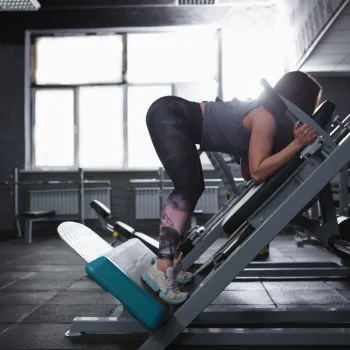
The reverse hack squat is the lower body exercise following the squatting movement pattern performed on the hack squat machine in an athletic stance.
It is an excellent hack squat variation, biomechanically different and better for athletes and those participating in running and jumping sports.
The reverse hack squat can easily be programmed into your lower body workouts to increase your leg strength and power.
Related Articles:
What Muscles Does the Reverse Hack Squat Train?
The reverse squats trains lower body muscles such as gluteus medius, gluteus minimus, gluteus maximus, quadriceps femoris, and hamstring complex.
Additional hip flexors, adductors, and core muscles will help perform the movement more efficiently and with enhanced stabilization.
The Best Reverse Hack Squat Alternatives & Variations

Here are the best hack squat variations and alternatives you should consider adding to your workout plan.
"Unlike the back squat, the hack squat allows you to squat with a barbell without putting load on your spine. If you’ve got back issues, it will let you target your quads and legs without demanding quite so much from your upper body. "
- Jesse Zucker, Certified Personal Trainer
Barbell Hack Squat

The barbell hack squat is a great exercise targeting both anterior and posterior chain muscles. Combining squatting and deadlift patterns, it effectively works on muscles like quads, hams, and glutes.
Here's how to do it:
- Begin by placing the weighted barbell on the floor.
- Load it appropriately for 6 to 8 reps.
- Stand with feet shoulder-width apart, take a pronated grip.
- Maintain a straight back.
- Initiate the movement by pulling the barbell upward, achieving a triple extension.
- Hold the top position briefly, then reverse the motion.
- Aim for 6 to 8 reps per set.
- Complete 4 sets in total.
- Allow a rest period of 3 minutes between each set.
Related: Best Barbells For Your Home Gym
Machine Hack Squat
The machine hack squat, while effective for lower body muscle development, is considered less functional due to its lying position on the back.
Here's how to do it:
- Load the machine appropriately for 8 consecutive reps without pausing.
- Lie on the machine.
- Adopt a regular starting position with feet shoulder-width apart.
- Lower your body toward the floor by bending your hips, knees, and ankles.
- Reverse the motion to return to the starting position.
- Complete 8 reps, 4 sets, and rest for 2-3 minutes between sets
Reverse Hack Squat Good Morning

Reverse hack squat good mornings is a tough posterior chain exercise that will bulletproof your hamstrings.
Here's how to do it:
- Load the machine with suitable weight for at least 6 reps without resting.
- Enter the squat machine, positioning your feet shoulder-width apart.
- Keep your back flat, knees slightly flexed throughout.
- Initiate the exercise by bending forward, driving your butt toward the ceiling.
- Reverse the motion when your torso is close to parallel with the ground.
- Repeat for 6 reps, 3 sets, and rest for 2 minutes between each set.
FAQs
Are Reverse Squats Effective?
Yes, reverse squats are effective. Reverse hack squats are an excellent hack squat variation useful for athletes and running sports due to their unique biomechanical position and placement of body weight.
Is Reverse Hack Squat Safe?
Yes, a reverse hack squat is safe. The reverse hack squat machine allows for a safe squat position and is excellent for developing leg muscles such as the quadriceps, glutes, hamstrings, and hip flexors.
Is Reverse Hack Squat Good for Glutes?
Yes, the reverse hack squat is good for the glutes. The reverse squat is one of the best lower body exercises, along with the traditional hack squat and barbell squat, for building strong and powerful glute muscles.
References:
- https://www.ncbi.nlm.nih.gov/pmc/articles/PMC4215195/
- https://www.ncbi.nlm.nih.gov/pmc/articles/PMC6950543/
- https://pubmed.ncbi.nlm.nih.gov/15571428/
- https://pubmed.ncbi.nlm.nih.gov/28704312/
About The Author
You May Also Like
